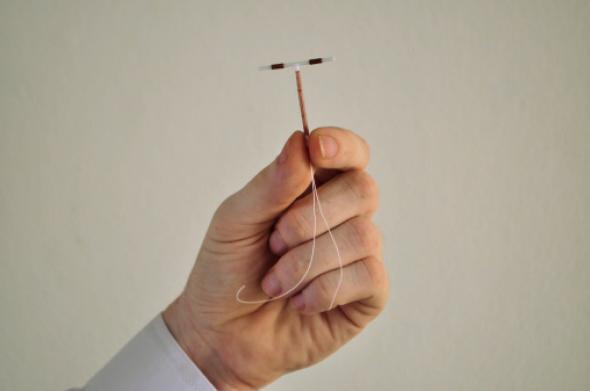One of the reproductive rights movement’s mottos has long been, “Trust women.” As a new president who aims to repeal the Affordable Care Act and overturn Roe v. Wade is sworn into office, some medical professionals and advocates are giving that phrase new meaning by empowering women to take their care into their own hands—literally. Articles in Cosmopolitan and Rewire this week highlight a couple of ways that women can control their own fertility in the event that they can’t afford to visit a doctor or in the event that abortion is outlawed.
Cosmopolitan profiles a doctor who is giving her patients the option to leave their intrauterine device strings long to allow them to remove it without a doctor’s appointment. IUDs feature a couple of flexible threads that dangle through the cervix into the vagina when the device is placed properly. They allow women and doctors to confirm that the device is correctly in place, and they also give doctors something to grasp onto when it’s time to remove the device. Typically, doctors trim the strings down to a few centimeters so that women (and their sexual partners) can’t feel them most of the time. But with many people’s future insurance coverage uncertain during the Trump presidency, some women don’t know if they will be able to afford a doctor’s appointment to remove their IUDs in the event that they experience intolerable side effects, decide that they want to get pregnant, or simply arrive at the end of the device’s effectiveness period (three to 10 years, depending on the type of IUD). Dr. Martha Simmons, a physician at a community health center in Harlem, tells Cosmopolitan that she gives her patients the option to leave the strings long to give them the possibility of self-removing the IUD if they can’t afford a doctor’s appointment.
Another doctor, Stephanie Long of San Francisco, tells Cosmopolitan that the idea of leaving IUD strings long to give women more control isn’t a new one. “That’s been around for a long time,” she says. “I think one of the concerns with IUDs, for some women, is that they want a little bit more control, so the idea that they couldn’t stop their method when they wanted to without an office visit doesn’t sit well for some people.” Self-removal comes with a small risk of breaking the IUD, but women who are uncertain about their access to health care in the years to come might be willing to take that risk if it means they can stop using a birth control method when it no longer serves their needs.
Meanwhile, in Rewire, women’s health advocates Francine Coeytaux and Elisa Wells consider the future of DIY abortions in the age of abortion medication. “Thanks to the advent of these pills—mifepristone plus misoprostol or misoprostol used alone, which are safe and effective even when used correctly outside of the medical system—women are not likely to die or be injured by taking matters into their own hands,” write Coeytaux and Wells. Currently, both mifepristone and misoprostol require a prescription, and many states controlled by anti-choice Republicans place additional restrictions on them—requiring patients to take them in the presence of a doctor, for instance, or forcing doctors to follow outdated (and dangerous) prescription protocols. That means that women who try to end their pregnancies with medication at home might be placing themselves at risk of legal repercussions, depending on where they live. Coeytaux and Wells belong to an advocacy group that is fighting for the legalization of self-induced medication abortions, but in the current political climate, abortion medication is likely to become harder, not easier, to access legally. Their Rewire article is a reminder that in a dystopian post-Roe v. Wade future, women who manage to covertly obtain misoprostol—through a modern-day Jane Collective, perhaps—have a good chance of ending their own pregnancies safely, effectively, and without the assistance of a doctor.
In an ideal world, every woman would be able to afford to go to the doctor to easily obtain contraception or an abortion. In a world where an anti-abortion zealot is our newly minted vice president, however, access to OB-GYNs and abortion providers is likely to get a lot iffier for millions of women. Cosmopolitan and Rewire remind us that there are certain types of reproductive health care that women can self-administer as a last resort.
